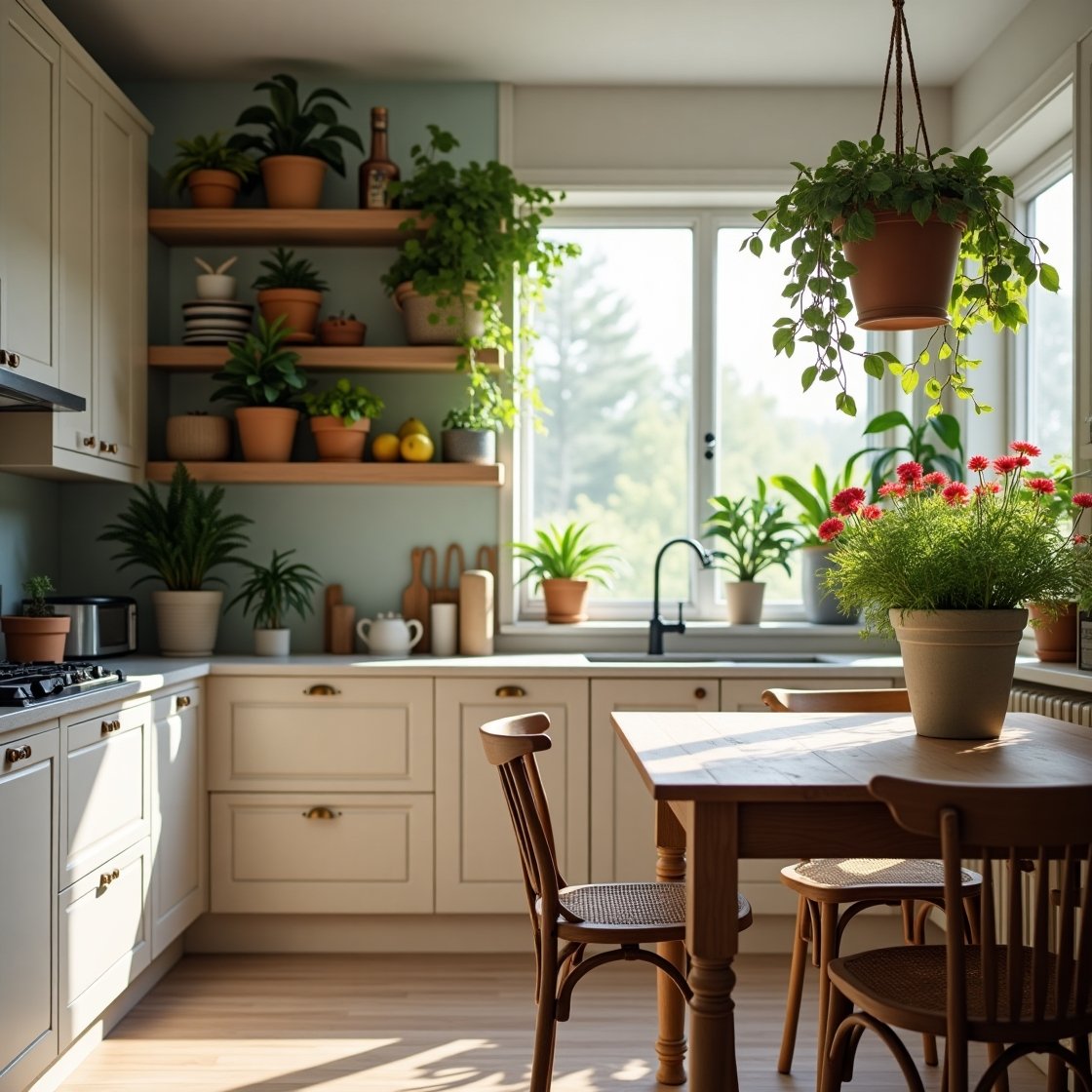The kitchen is more than a place for cooking — it’s the heart of the home. It’s where we gather, create, and nourish ourselves and others. Adding plants to your kitchen is one of the simplest and most effective ways to make the space feel fresh, cozy, and vibrant.
From herb gardens on the windowsill to hanging greenery over cabinets, plants add beauty, aroma, and even function. In this guide, you’ll learn how to decorate your kitchen with plants that fit your space, your cooking habits, and your personal style.
Why Plants Belong in the Kitchen
Bringing greenery into the kitchen has both aesthetic and practical benefits:
- 🌿 Enhances freshness: Greenery brings life into a room filled with hard surfaces like tile, stainless steel, and stone.
- 🧼 Improves air quality: Many plants help remove airborne pollutants and reduce cooking odors.
- 🌸 Adds personality: Colorful pots, trailing vines, and herbs can define your kitchen’s mood and theme.
- 🍋 Functional decoration: Herbs and edible plants not only look great — they add flavor to your meals.
Best Types of Plants for Kitchen Spaces
The kitchen can be a tricky environment for plants — there’s heat, steam, and sometimes limited light. Choose plants that thrive in these conditions:
🌱 1. Herbs
- Basil, mint, thyme, oregano, rosemary, and parsley
- Need lots of light (ideal near windows or under grow lights)
- Water regularly and harvest frequently
🌿 2. Spider Plant
- Excellent air purifier
- Tolerates a range of conditions
- Looks great in hanging baskets or on top of cabinets
🍃 3. Pothos
- Very forgiving and beautiful trailing plant
- Can live in low light
- Adds elegance above cabinets or on shelves
🌺 4. Orchids
- Prefer indirect light and stable humidity
- Add a touch of luxury to counters or window ledges
🪴 5. Aloe Vera
- Needs sunlight and minimal watering
- Great for burns and cuts — handy in the kitchen!
🍓 6. Strawberry plants (in containers)
- Can grow indoors with enough light
- Decorative and edible
Creative Ways to Display Plants in the Kitchen
There’s no shortage of creative spots to place plants in your kitchen, even if your counter space is limited.
✅ Hanging Planters
Hang from the ceiling, above the sink, or near windows. Macramé holders or wall hooks keep them accessible and decorative.
✅ Shelf Gardens
Use open shelves or floating ledges for trailing plants or small herbs. Mix with kitchen decor like mugs, jars, or cutting boards.
✅ Windowsill Herb Garden
Perfect for kitchens with good sunlight. Grow basil, thyme, and rosemary in matching pots for visual harmony.
✅ Above the Cabinets
Place trailing pothos or ivy plants above upper cabinets to fill the vertical space and soften sharp lines.
✅ Magnetic or Wall Planters
Install wall-mounted planters, or even magnetic ones on the fridge or range hood — ideal for compact kitchens.
✅ Countertop Mini Planters
If you have some free counter space, use a tray with 2–3 small plants near your utensil jar or knife block.
Coordinating Plants with Kitchen Styles
Choose plant types and containers that match your kitchen’s aesthetic:
- Modern/minimalist: Succulents in white or concrete planters
- Rustic/farmhouse: Herbs in galvanized buckets or terracotta pots
- Boho/eclectic: Macramé hangers, colorful pots, and trailing vines
- Scandinavian: Clean lines, wood accents, and simple foliage
Tips for Caring for Kitchen Plants
Kitchen environments can be challenging for plants, so here are care tips:
- Avoid placing plants near direct heat sources like ovens or toasters
- Ventilate the space well — cooking steam and smoke can stress plants
- Wipe leaves regularly to remove grease and dust buildup
- Water consistently but check the specific needs of each plant
- Rotate plants every few weeks to balance light exposure
Pro Tip: Install a small grow light strip under upper cabinets if your kitchen lacks natural light.
Functional Kitchen Plants: Beyond Decoration
Make your kitchen plants work for you:
- Herbs: Use daily for cooking
- Aloe vera: Natural remedy for burns
- Lavender: Adds fragrance and repels moths
- Mint: Use for tea, cocktails, or desserts
- Chili pepper plants: Add color and spice
Plant Safety in the Kitchen
Be mindful of:
- Pets: If you have pets, make sure your kitchen plants are non-toxic
- Pest control: Avoid overwatering — damp conditions invite gnats and mold
- Accessibility: Keep delicate plants away from high-traffic areas or where they could be knocked over
Final Thoughts: A Green, Flavorful, and Welcoming Kitchen
Plants can transform your kitchen into a welcoming, energized, and practical space. Whether you’re growing your own herbs, adding a splash of green to your countertops, or hanging pothos from the ceiling, greenery adds vitality and charm to every kitchen style.
Start with one or two small pots, and let your indoor garden evolve along with your cooking routine. A kitchen full of life is a kitchen full of love. Remembering that you can come back and read this article whenever you want and share it with your friends and family, I’m sure they will also like it, just as you did.
